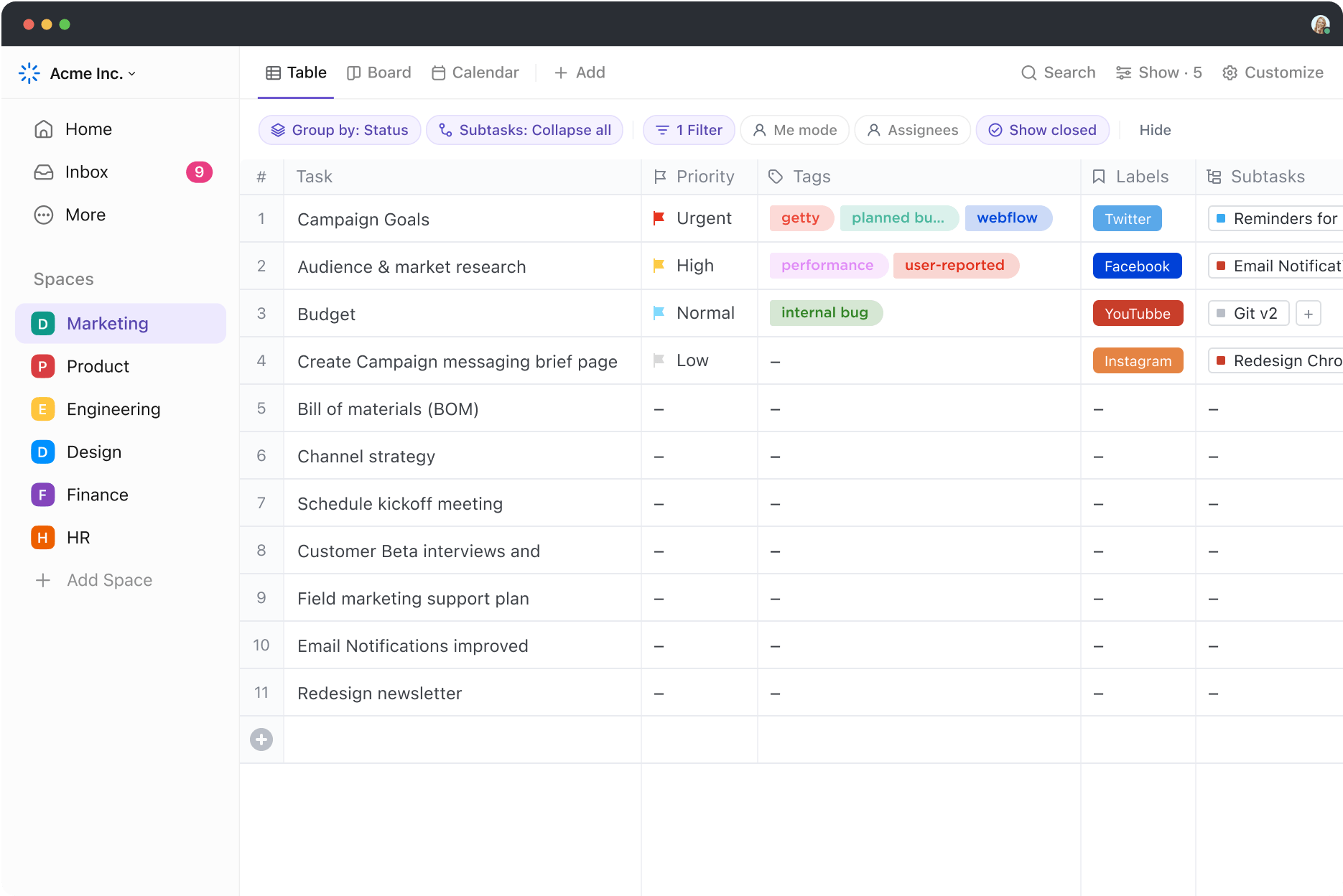Efficient data management is the backbone of any well-organized workflow. Whether you’re tracking business records, managing inventory, or organizing personal data, having a structured system makes all the difference.
Microsoft Access, aka MS Access, offers a user-friendly way to create and manage databases—even if you don’t have advanced technical skills. In this blog, we’ll walk you through setting up a database in Access and explore a more powerful alternative for those seeking greater flexibility and scalability.
How to Create a Database in Access?
What Is Microsoft Access?
Unlike Excel, which is primarily a spreadsheet tool, Access is designed for handling structured data with relationships between different tables.
Access lets you:
- Create databases to store large amounts of structured data
- Design forms for easy data entry
- Run queries to filter and analyze information
- Generate reports to make sense of your data
It’s ideal for small businesses, students, and anyone who needs to manage data without diving into complex coding.
🔎 Did you know? Access has been around for decades! Microsoft Access was first released in 1992, making it older than Google and even some of today’s most popular programming languages!
Why Use Access for Database Creation?
When working with structured data, you need a tool that is organized, efficient, and user-friendly. Microsoft Access meets all these criteria, streamlining your project management database creation, without having to juggle endless spreadsheets.
Here’s why Access is a solid choice:
- Easy to use: No need to be a database expert! With its drag-and-drop tools, wizards, and templates, setting up a database in Access is simple
- Relational database power: Unlike Excel or spreadsheet templates, Access lets you create relationships between tables, meaning less duplicate data and more efficiency
- Forms for easy data entry: Instead of manually entering data into rows and columns, Access creates user-friendly forms to input and retrieve data smoothly
- Powerful queries & reports: Need to filter, analyze, or generate reports? Access helps you sort and visualize data with just a few clicks
- Integration with other Microsoft apps: Since it’s part of the Microsoft ecosystem, Access lets you easily import/export your own data from Excel and Word
💡 Pro Tip: When using free database software, make sure you consider its scalability, security, and integration capabilities to ensure it meets your long-term needs. This way, you can avoid outgrowing the tool too quickly and ensure seamless data management as your needs evolve.
How to Create a Database in Access: Steps to Follow
Ready to create a database in Access? There are several ways of going about it. It primarily depends on whether you’re using a template or making it from scratch.
Here’s a quick overview:
1. Creating a database from scratch
If you have very specific or unique requirements, creating your own database is a great option.
Here’s how to create a blank database:
Step 1: Create a new blank database

- Open Access and go to the File tab
- Select New and click on Blank Database
- Provide a name for your database in the File Name field
- To specify where to save the database, click Browse or the folder icon and choose your desired location
- Click Create to establish the new database
Step 2: Create a table


Access automatically creates a new database table named Table 1 and opens it in Datasheet View.
If you want to create a new database table, here’s what to do:


- Go to the Create tab on the Ribbon
- Click Table to insert a new table into your database
Remember, Access displays the columns as Fields and the rows as Records.
Step 3: Add data to the table


- To add data, click on the cell under Click to Add and enter your information. Access will automatically set each field’s data type
- Press Enter or Tab to move to the next cell and continue entering data
If you want to specify the type of data a column will hold, follow these steps:
- Click on Click to Add at the top of the column
- Select the appropriate data type (e.g., Short Text, Number, Date & Time) from the dropdown menu
- Enter a field name to describe the data in that column
- After entering your data, save the table by clicking the Save icon or pressing Ctrl + S
- Provide a meaningful name for the table and click OK
Step 4: Copy data to the table
If you already have an existing database (like an Excel spreadsheet or another database), you can easily import data or copy and paste it into Access. Follow these steps:
- Open the database file containing the data (Excel, another Access database, or even a Word document)
- Select the rows and columns you need in your existing database
- Press Ctrl + C (or right-click and choose Copy)
- In your Access table, click on the first empty cell where you want the data to begin
- Press Ctrl + V (or right-click and choose Paste)
Access will automatically highlight any mismatched or invalid entries to help you check for errors.
Step 5: Establish relationships
- If your database contains multiple tables, you can define relationships between them
- Navigate to the Database Tools tab and select Relationships
- Add the tables you want to relate and drag fields to create connections between them
Step 6: Add and run a query
Queries help you filter, sort, and analyze data in Access. Follow these steps to create and run a query:


- Open your Access database
- Click the Create tab
- Select Query Design


- Choose the table(s) you want to pull data from and click Add, then Close
- Select fields for your query by double-clicking the fields you want to include in the query design grid


- Apply filters (optional) by entering criteria in the Criteria row
- Click the Run button in the Design tab to run your query
- Click Save, name your query, and click OK
Step 7: Add a report


Reports help you present and print your data in a structured way. Here’s how to create one:
- Click the Create tab and select Report (for an automatic layout) or Report Wizard (for step-by-step customization)
- Use Design View to add headers, footers, and formatting
- Click Save, give your report a name, and click OK
- Click Print Preview to see how it looks before printing, and click Print once ready
🔎 Did you know? The first database was created in the 1960s! The first modern database system, Integrated Data Store (IDS), was developed by Charles Bachman in 1964—way before personal computers became a thing!
2. Creating a database using Access database templates
Creating a database in Microsoft Access using a database template is a quick and efficient way to get started.
Here’s how to do it:
Step 1: Open Access
Launch Microsoft Access on your computer.
Step 2: Select a template


- On the Access startup screen, you’ll see a variety of templates
- If you don’t see a template that fits your needs, use the Search Online Templates box to find more options
Step 3: Name your database
- After selecting a template, enter a name for your database in the File Name field
- To change the default save location, click the folder icon next to the File Name field and choose your desired location
- Click Create to generate your new database based on the selected template
- If a security warning appears, click Enable Content to allow the database to function properly
Step 5: Get started
- Your new database will open, ready for use
- Input data, modify existing tables, or customize the database structure as needed
📮 Insight: 74% of employees use two or more tools just to find the information they need, while jumping between emails, chat, notes, project management tools, and documentation.
This constant context-switching wastes time and slows down productivity. As the everything app for work, unifies all your work—email, chat, docs, databases, tasks, and notes—into a single, searchable workspace, so everything is exactly where you need it.
Limitations of Using Access for Database Management
While Microsoft Access is great for small projects, it does come with some drawbacks, especially when dealing with larger, more complex databases.
Here’s why Access might not be the best choice for long-term database management:
- Not ideal for large databases: Access was designed for small to medium-sized databases, and it struggles when dealing with millions of records. As the database grows, you may experience slower performance and increased loading times
- Limited multi-user support: Access supports multiple users, but only up to a point. When several people try to access or edit the database at the same time, it may lead to lags and conflicts
- Performance issues: Compared to advanced database management software, Access isn’t optimized for high-speed processing. Running complex queries, handling large data sets, or performing advanced calculations may slow it down
- Scalability concerns: Access works fine for small projects, but as your data grows, you’ll quickly hit its limitations. It has a file size limit of 2 gigabytes, making it difficult for large databases
- Security risks: Unlike enterprise-level databases that have strong encryption and user access controls, Access lacks advanced security features. This makes it less suitable for handling sensitive or confidential data
Create and Manage a Database with
Looking for a better alternative to Microsoft Access? , the everything app for work, offers powerful database features to help you store, organize, and automate data effortlessly.
Whether you’re tracking projects, budgets, or customer information, ’s customizable views, automation features, and seamless integrations make database design and management effortless.
Features like Dashboards and reports provide real-time insights into your database to help you make data-driven decisions. And integration with task management, automations, and reporting means your database is a dynamic part of your workflow.
Here’s how to build and manage a database in :
Choose the best view for your database


Custom Views in are like your personal command center—designed to help you see exactly what you need, when you need it. Whether you’re a list lover, a visual planner, or someone who thrives on timelines, lets you choose from views like List, Board, Calendar, Gantt, and more.
But it doesn’t stop there—you can filter, sort, group, and customize each view to match your unique workflow. Want to see only high-priority tasks due this week? No problem. Need a board view showing tasks assigned to each team member? Easy. These custom views help you cut through the noise and stay focused, and the best part? You can save and share them with your team so everyone’s on the same page. It’s flexibility and clarity, all in one workspace.
Create the perfect database with Table View—no coding required


If you love working with spreadsheets but need something more powerful and collaborative, ’s Table View is the perfect solution. It offers a 100% no-code route to creating, managing, and customizing databases without the complexity of traditional database software.
Table View lets you:
- Quickly filter & group data
- Adjust row heights
- Pin & unpin columns to keep important data visible while scrolling
- Reposition data fields by dragging and dropping them
- Bulk edit entries
- Export data for sharing or backup
Creating a database in ’s Table View takes just a few clicks:


- Open and navigate to your workspace
- Go to the Views bar and select Table View
- Adjust privacy and permissions if needed
- Hit Add View, and your database is ready!
From here, it’s all about customizing your columns to match your data needs. Unlike static spreadsheets, lets you structure your database exactly how you need it with Custom Fields.


Whether managing contacts, budgets, inventory, or content, ensure accurate, well-organized data with field types like:
- Numbers: Automatically restricts a column to numerical entries, preventing errors
- Text: Store names, descriptions, or any open-ended details
- Dropdowns: Make selections easy with pre-set choices
- Money and percentages: Ideal for tracking budgets, sales, or performance metrics
- Email and location: Store contact details and addresses effortlessly
Want something else? Create your own Custom Fields Or Ask ’s AI to create them for you!


Use the Relationship Custom Field to connect entries across different Lists or Workspaces. It essentially creates a relational database without writing a single line of code! So, connect clients to projects and track their progress, link inventory items to supplier details, and manage content calendars with interconnected workflows.
Save time with Templates
No need to build your database from scratch! offers ready-made database templates to help you set up your data system instantly. We recommend these two:


’s Project Management Spreadsheet Template helps visualize timelines, track progress, and manage multiple projects together. It lets you keep all the project information in one place, update it regularly, and share changes with the stakeholders.
The template offers 5 custom fields and multiple custom views like Calendar View, Table View, and List View to help you visualize data in the best way.
Looking for something simple? ’s Spreadsheet Template is perfect for capturing essential information from your customers and keeping it handy from anywhere.
Hear what Shikha Chaturvedi, Business Analyst at Cedcoss Technologies Private Limited, has to say about :
💡 Pro Tip: Managing customer relationships? ’s CRM tools let you track leads, sales pipelines, and interactions, all within a centralized database. This is great for businesses that need an all-in-one solution for both task and customer data management.
Automate your database with Automations


Why spend time on manual data entry when can do the work for you? With Automations, you can:
- Auto-assign tasks when a new record is added
- Automate data entry tasks and priority shifts
- Send notifications when data changes
- Update statuses automatically based on conditions
- Sync with other tools to keep everything in one place
This means less admin work and more focus on what matters. While offers 100+ automation templates, you can also create your own using Brain—the AI assistant.


Elevate Your Database Management with
Microsoft Access provides basic database creation but falls short with scalability issues, an outdated UI, and no real-time collaboration—key for modern, flexible workflows.
If you’re looking for a modern, flexible, and more efficient way to manage your data, is the answer.
With Table View and seamless integrations, it transforms database management into a collaborative and intuitive experience. Additionally, it goes beyond traditional databases by offering real-time collaboration, customizable workflows, and powerful reporting tools—all in one place.
So why wait? Sign up on and optimize your database management with a smarter, more collaborative approach today!


Everything you need to stay organized and get work done.











